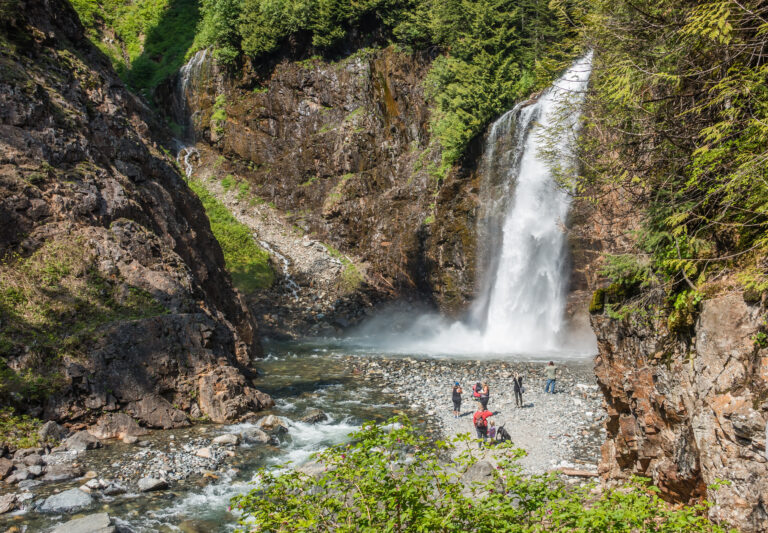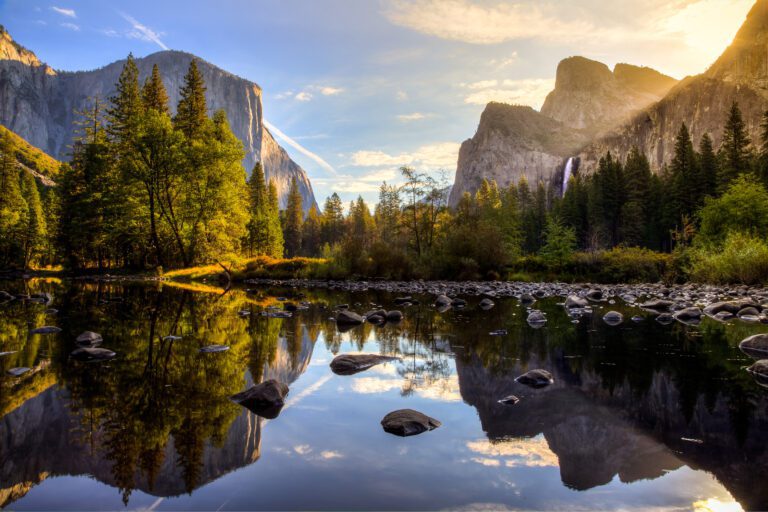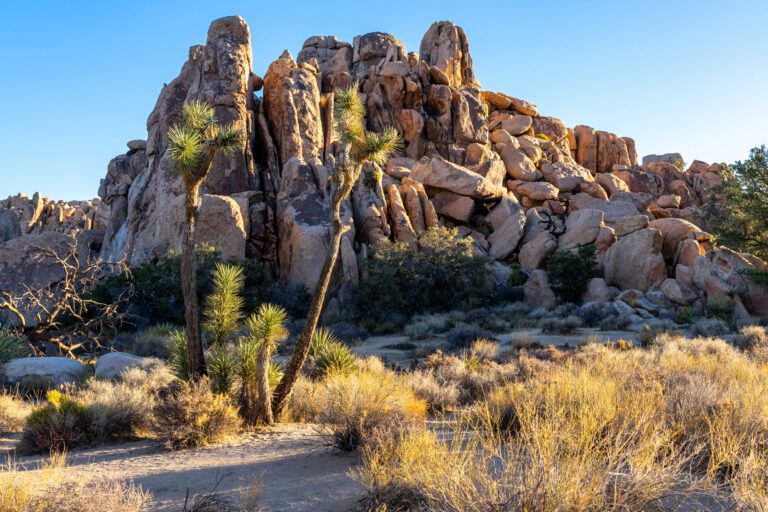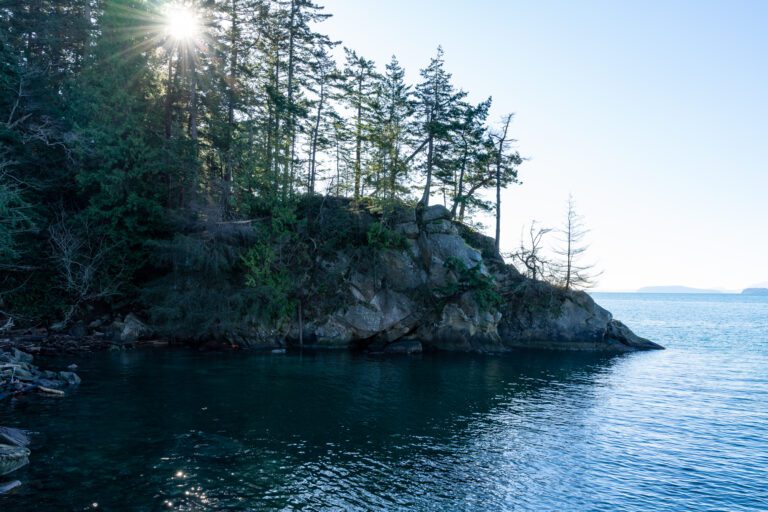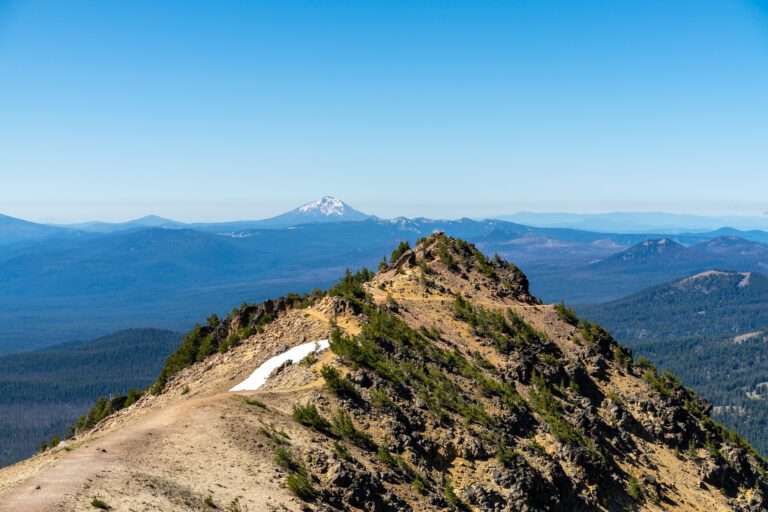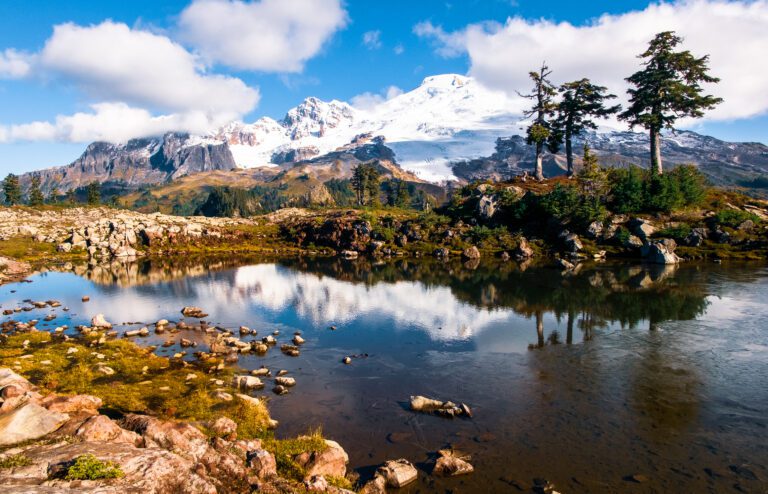What is the Best Time to Visit Mount Rainier? Complete Guide
Have you caught glimpses of the stunning, glaciated peak of Mount Rainier in photos, or perhaps seen it in person among the lineup in the Seattle skyline? The glistening white peak is hard to miss and can be seen from across western Washington. Curious to experience the mountain up close? It’s time to start planning a trip to visit Mount Rainier National Park!
The park is abundant in trails, scenic roads, waterfalls, wildflowers, new and old growth forest, statuesque trees, and fauna like chipmunks, mountain goats, and black bears.
Mount Rainier is a phenomenal city escape – either as a day trip or a weekend trip – offering some of the best nature of the Pacific Northwest. The best time to visit Mount Rainier National Park is really dependent on your interests – it can be experienced throughout the year.
Mount Rainier National Park is where my love for hiking and the great outdoors was born. My family made trips there from the time I was an infant. Up until this day, hiking at Mount Rainier remains a tradition for my dad and I.
Intrigued by the prospect of exploring the park but unsure of when to make your trip? Although you can access the park year-round, the experience shifts drastically month-by-month due to a constant changing of seasons. This guide will help you determine when to visit Mount Rainier National Park based on what you hope to experience.
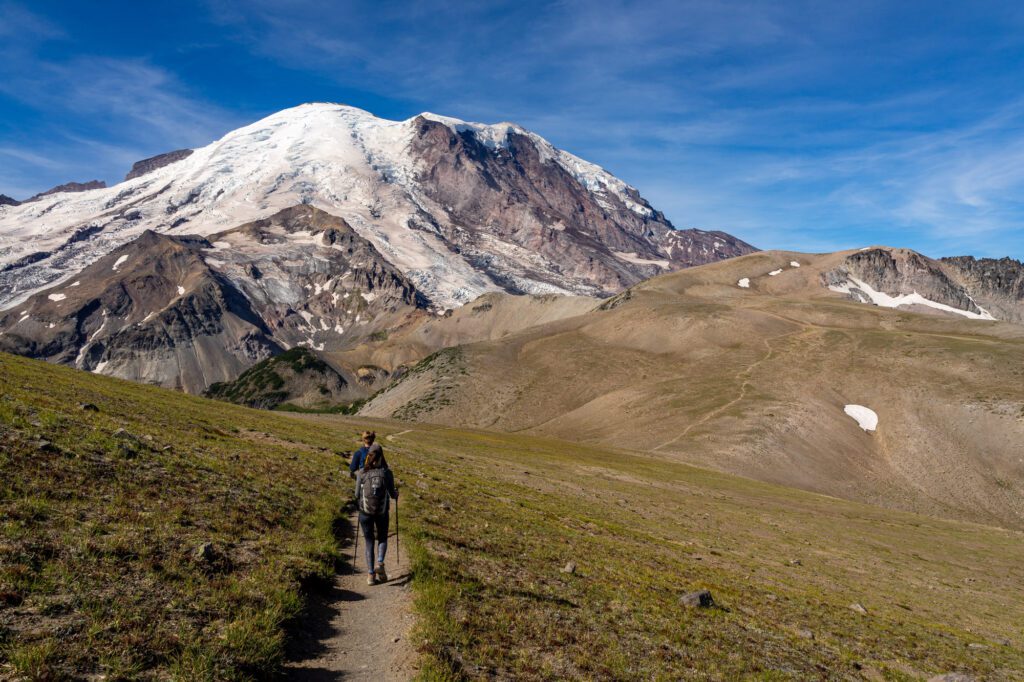
Disclaimer: Some of the links in this post, like hotel and vacation rental links, are affiliate links, meaning at no additional cost to you we make a little bit of money if you click through and book. That being said, we would absolutely never recommend something to you that we don’t stand behind 100%.
The Best Time to Visit Mount Rainier National Park: A Complete Guide
So, what is the best time to visit Mount Rainier National Park? Like most destinations in the mountains, Mount Rainier is a fairly seasonal destination in Washington State, though it can be visited year-round as long as you know what you’re getting yourself into.
Summer and fall are the two most popular times of the year to visit and are the seasons when the park is most accessible. However, winter and spring each offer their own merits and shouldn’t be overlooked because Mount Rainier is full of adventures and breathtaking beauty throughout the year.
In this guide, we’ll go through all four seasons to help you figure out when to visit for your particular interests, and what to expect when you arrive.
Planning a Trip to Mount Rainier? We’ve got a few other guides to help you plan an amazing trip.
- The Most Spectacular Hikes in Mount Rainier National Park
- What to Do in Mount Rainier National Park: A Complete Guide to Visiting Rainier
- How to Plan a Perfect Day Trip from Seattle to Mount Rainier National Park
- Hiking the Burroughs Mountain Trail: Everything You Need to Know
- Epic Mount Rainier Views on the Naches Peak Loop: A Complete Trail Guide
- The Best Time to Visit Mount Rainier National Park: A Complete Guide to All Four Seasons
Summer in Mount Rainier National Park
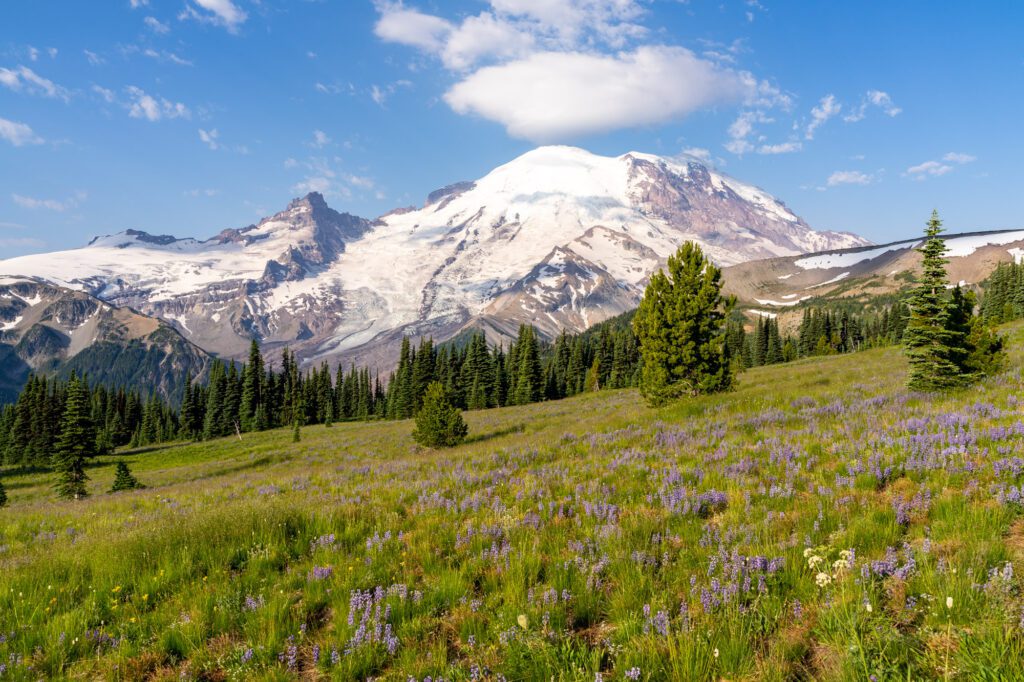
At first glance, summer seems like the obvious choice for the top season in Rainier. The skies are blue, the sun is shining, the snow has melted and hiking trails are mostly snow free, and let’s be honest: summer is simply a magical time in the Pacific Northwest in general.
One important element to note is that summer starts late in Mount Rainier so don’t expect to hit the trails in June. Early-to-mid July is the start of hiking season and the entire park will be accessible for the rest of summer, which typically lasts through early-mid September. Exact timing depends on the year.
Expect to see nature at its finest in July and August, when waterfalls and creeks are roaring with fresh snow melt and lush meadows are blooming with brilliant wildflowers from late July.
Temperatures and Rainfall
Although summer technically starts in late June, Mount Rainier is still thawing at this time. As such, the precipitation and temperatures vary quite drastically from the start to the end of summer.
- June: In June, temperatures are slowly starting to warm up and range from about 49 to 73 degrees. While there is much less precipitation in June, there are still many drizzly days with steady, light rain and an average rainfall of 1.7 inches.
- July: From early July, temperatures are reliably warmer and sunnier, with a temperature range between 53 and 78 degrees. July is typically the driest month in the park with an average of about 0.7 inches of rain.
- August: By August, expect to have many hot and dry days. August is reliably the warmest month at Rainier with temperatures ranging between 53 and 79 degrees. Precipitation is also at a minimum, with an average of approximately 0.8 inches of rain.
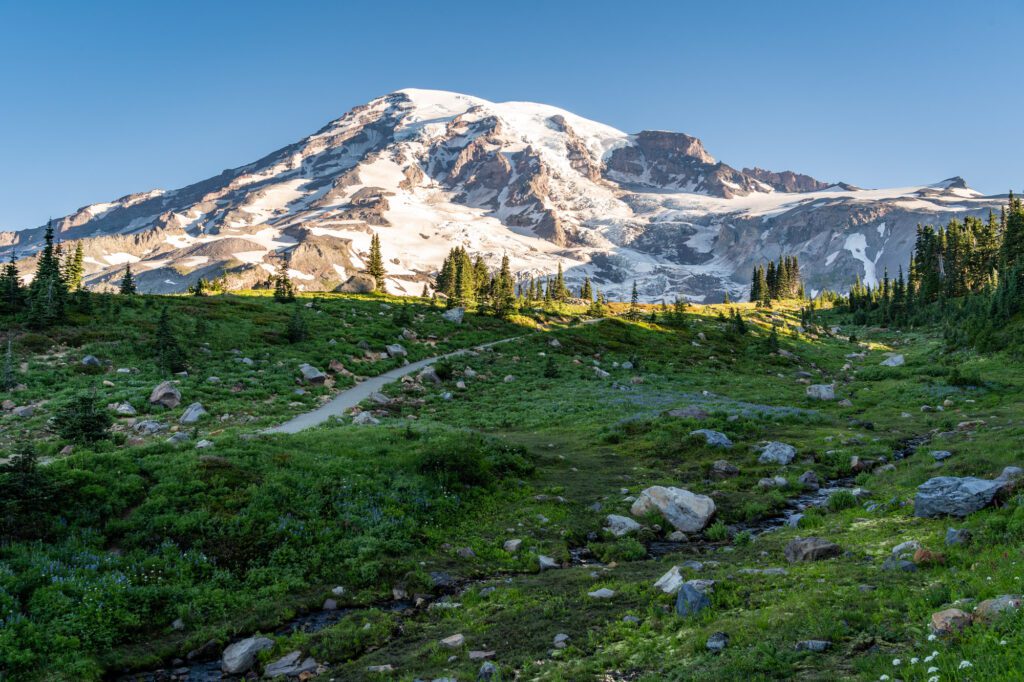
Pros and Cons of Visiting Mount Rainier in the Summer
Pros:
- Sunshine and blue skies. During summer, the park experiences very little precipitation, which means consistently clear days with blue skies, sunshine, and little likelihood of getting caught in the rain. This also means that views of Rainier will be at their prime, unobstructed by clouds and fog.
- Long days and late sunsets. Summer sees the most sunlight with the sun setting around 9:00 pm at its height. This makes for long days of hiking and extended time on the trail.
- Bountiful nature. Wildflowers and berries are blossoming in abundance during summertime. Honestly, the park is just absolutely stunning and full of life around every corner during this season.
Cons:
- Crowded trails. Summertime is also the most crowded so unfortunately, you’ll be competing for parking spots and space on the trail with many other hiking enthusiasts. If you’re after some solitude, it is best to visit mid-week or take on lesser known hikes during the summer.
- High temperatures. Despite the high elevation, Mount Rainier doesn’t always have cool weather. Some days on the mountain can be quite hot, which makes hiking a greater challenge, particularly on the exposed trails with minimal shade. Bring lots of water and sun protection for these days!
Fall in Mount Rainier National Park

Fall is another popular time in Mount Rainier and is a close contender with summer for my favorite season in the park.
The air is crisp, many days are still sunny though without sweltering temperatures, and the trees are displaying the changes of the season.
The Northeast doesn’t need to take all the credit for fall foliage, as Mount Rainier boasts golden larches, elderberry, aspen, and cottonwoods in transition.
Temperature and Rainfall
While September starts off with summer-like weather, by November, the park will be drastically different with cold temperatures and high precipitation.
- September: September fluctuates greatly, feeling like summer one day and then fall coming into full swing the next. Expect warm, sunny days at the start of the month and cooler, damper days by the end, though it really varies each year. Temperatures range between an average of 49 and 72 degrees in September, with an average rainfall of 2 inches.
- October: October days at Rainier are cool, crisp, and often a bit damp. That being said, they’re still quite pleasant for hiking most of the way through the month, although some years snow fall can come as early as October. On average, temperatures range between 42 and 61 degrees in October and average rainfall is 5.1 inches.
- November: November quickly turns into winter weather with a steady drop in temperature and rise in precipitation. In November, temperatures range between 38 and 50 degrees. It is also the rainiest month, with an annual average of 9.1 inches of rainfall.
Pros and Cons of Visiting Mount Rainier in the Fall
Pros:
- Pleasant, moderate temperatures. Weather is generally very enjoyable until early October or so, which means it’s neither too hot nor too cold to be out on the trails. Hikes are still accessible through much of the fall season and only close down in November after the first snowfall.
- Crowds are fewer. By early fall, the summer crowds will have thinned out, giving you more peace and quiet in the park. Although you might still be competing for space during the weekends, on weekdays you’re likely to have trails mostly to yourself as you experience the slow retreat of the park into a slumber.
- Colorful foliage. It would be impossible to talk about fall without highlighting the stunning fall foliage in Rainier. Many of the meadows and forests are on fire with rich hues of gold, crimson, and burnt orange.
Cons:
- Drizzly, damp weather. Fall experiences higher rainfall than summer, which makes days on the trail more unpredictable. While many days are sunny, many are also rainy. The trails can get damp and muddy, you may find yourself caught some drizzle, and views of the mountain aren’t always clear.
- Shorter days. Earlier sunsets mean a shorter window of time to hike, so you’ll need to plan to start your adventure earlier in the day to make sure you’re not coming down the mountain in the dark.
- Park closures in late fall. During the latter half of fall, much of the park may be shut down after the first snowfall. While it varies by year, often by the end of October or early November, the road to Sunrise will be closed and will remain closed until summer in the next year. This makes the fall feel somewhat short so make sure to maximize your time there while you can, as you never quite know when the first snow will arrive.
Spring in Mount Rainier National Park
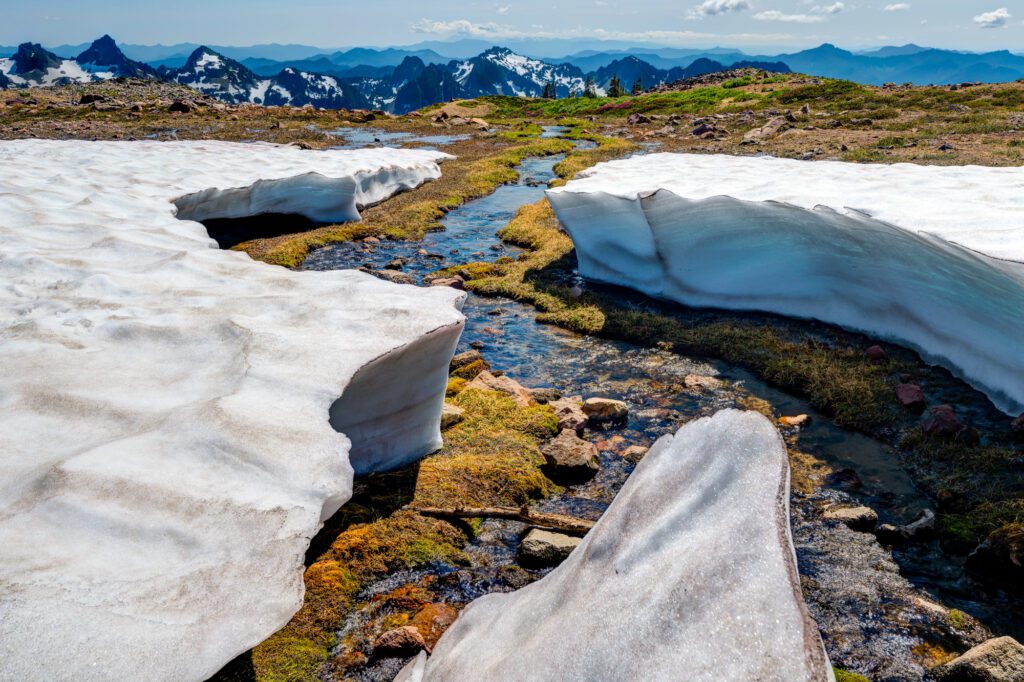
In spring, Mount Rainier is slowly waking up from a long winter slumber. Meadows are springing back to life with blossoming flowers, birds are chirping, and wild berries are popping up on bushes.
The trick? There is still heavy snow coverage so unfortunately, the majority of trails still aren’t accessible during spring with the exception of a few lower elevation hikes around Packwood and Carbon River.
Even though some hikes that are snow-covered are still accessible, it is important to proceed with caution and make sure you have the right equipment to traverse snowy, icy trails and keep you sufficiently warm.
The upside? By late May, most of the roads through the park open up. So even though you may not be able to hike as extensively, late spring is a great time to road trip through the park and admire the views, waterfalls, and slowly awakening nature from the car and lookout points.
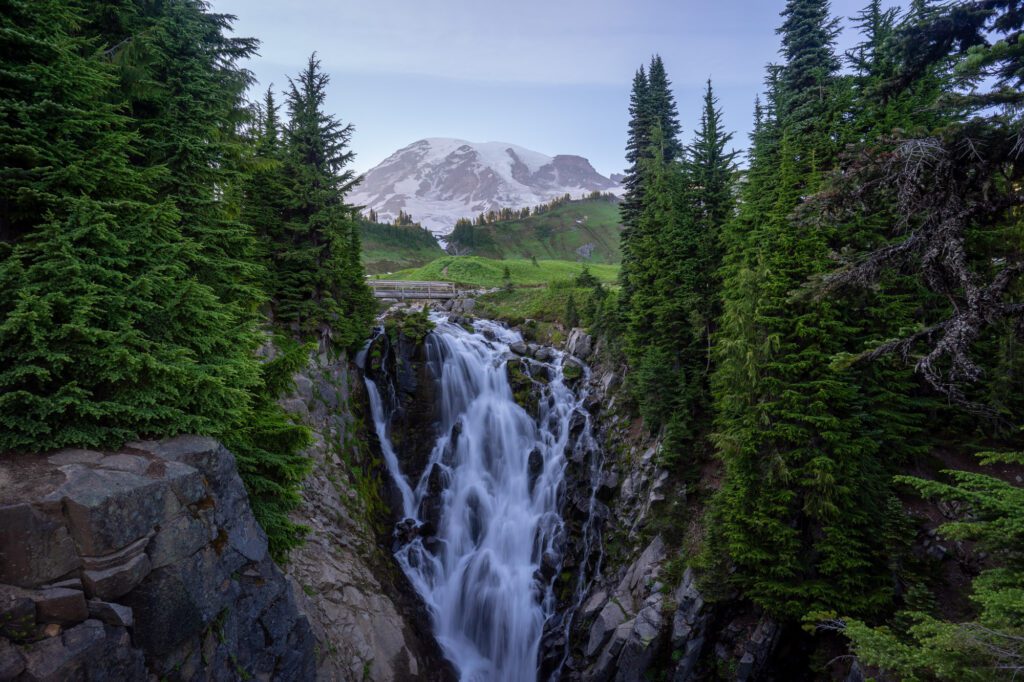
Temperature and Precipitation
Spring is a time of awakening in Mount Rainier National Park, which includes a significant rise in temperatures and drop in precipitation levels. However, this shoulder season can still be quite chilly and rainy with pockets of nice weather.
- March: In March, Rainier is slowly starting to thaw with more reasonable temperatures, although the park still remains blanketed by snow and is still quite a wet month. Temperatures range between 37 and 54 degrees in March, while rainfall is 5.7 inches on average.
- April: April starts to show the first signs of spring, with increasingly pleasant temperatures ranging from 40 to 59 degrees. April can still be quite a damp month, seeing on average 3.9 inches of rainfall.
- May: In May, there’s a significant jump in temperatures with the promise of summer just around the corner. Temperatures range between 45 and 66 degrees in May. This is the month that starts to become drier as well, averaging about 2.5 inches of rainfall.
Pros and Cons of Visiting Mount Rainier in the Spring
Pros:
- Peak waterfall season. One of the highlights of springtime at Mount Rainier is that the fresh snowmelt makes for roaring waterfalls. While trails largely remain inaccessible, many of the waterfalls are just a short stop off a road through the park. Spring is the perfect time to take a little road trip through the park and seek out all the waterfalls in their most impressive, voluminous state.
- Fewer people. Crowds are quite low during springtime, so if you hit the weather right, you may find yourself enjoying the park with just a few other visitors at most.


Cons:
- Unpredictable weather. Spring weather can be quite unpredictable. Even though the sun might appear to be shining, you’ll still be contending with quite a few gray, drizzly, chilly days.
- Many sections are inaccessible. Being in the park during the spring might feel like a bit of a tease as well, as most of the trails will still be inaccessible for hiking but the park won’t have quite the same winter magic. Cars are still required to carry tire chains during the spring. The areas that are accessible may also be quite muddy from snowmelt and spring rains.
Winter in Mount Rainier National Park
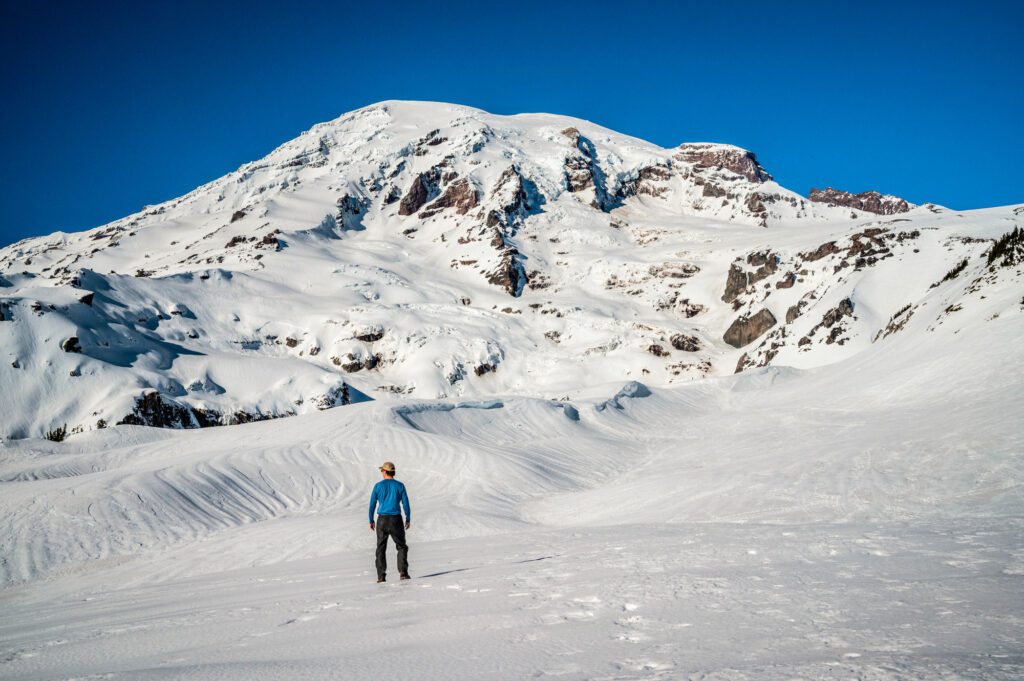
Mount Rainier takes on an entirely new façade during the winter and is perhaps most underrated during the winter months.
The majority of the trails are closed to hiking and many of the roads and access points also shut down when the first snow falls, and the Nisqually Entrance (that’s the one that’s at the southwest corner of the park) is the only one that remains open year-round.
While your activities are more limited in the park during winter, it is still absolutely worth a visit.
Take in the splendor of the park with few other visitors, soak up the silence, and marvel at the evergreens draped in snow creating a spectacularly serene ambiance.
It is also important to note that all areas of the park are snow-covered during the winter and some lower elevation areas rarely see snowfall.
Temperatures and Rainfall
Unsurprisingly, temperatures can be quite cool at Mount Rainier during the winter.
Personally, I struggle with the cold so I won’t be paying the park a visit nearly as frequently during the winter as I will during the summer, however, I do like to bundle up and enjoy the park at least once during the winter.
- December: December is typically the coldest month in the park. The temperatures range between 34 and 44 degrees, while rainfall is on average about 8.2 inches each December.
- January: January is pretty similar to December in terms of weather, which remains quite frigid. Average temperatures range between 35 and 45 degrees and rainfall is 7.3 inches on average during January.
- February: February is showing marginal signs of defrosting, though still remains very much in the throes of winter. Temperatures range between 35 and 49 degrees and rainfall is 6.5 inches on average during February.
Pros and Cons of Visiting Mount Rainier in the Winter
Pros:
- No crowds. If you’re looking to experience Rainier without the crowds, winter is the season for you. In many sections, you’ll have the park largely to yourself and can soak up its glory in complete peace.
- Winter wonderland landscapes. The landscapes of Rainier are mesmerizing during winter. While you might not be privy to meadows blooming with wildflowers and warm, sun-soaked days, Mount Rainier transforms into a winter wonderland once the first snow falls.
- Winter activities. Although hiking is limited in winter, this season also brings unique experiences. You can snowshoe and cross-country ski on a few trails, which offer you an entirely unique experience in the park than summer and fall hikes.
Cons:
- Limited activities and accessibility. Wintertime in Rainier is much more limited. You won’t have the opportunity to experience the majority of the sections and hikes in the park due to snow coverage closing down many of the roads, trails, and entrances to Mount Rainier National Park.
- Challenging terrain. The roads can also be challenging to navigate during winter, so you’ll want to be prepared with a high clearance vehicle. All cars are required to carry tire chains in the park during winter. Weather is unpredictable so it is important to check conditions before you go.
More to Explore in Washington State
- The Best Things to Do in Seattle, Washington
- A Weekend in Seattle: A Seattle Itinerary for First Timers
- Where to Stay in Seattle: A Complete Neighborhood Guide
- The Best Day Trips from Seattle: 10 Great Options
- The Best Weekend Getaways from Seattle
- The 17 Best Hikes Near Seattle (Local’s Guide)
- 16 Incredible Hikes in Washington State
- The Best Easy Hikes in Washington State
- The Best Cozy Cabin Getaways in Washington State
- The 3 Amazing National Parks in Washington State
- The Best Hikes in Mount Rainier National Park
- A Complete Olympic National Park Itinerary
- How to Plan a Perfect North Cascades National Park Itinerary
- 15 Gorgeous Waterfalls in Washington State
- How to Plan an Amazing Washington Road Trip Itinerary

